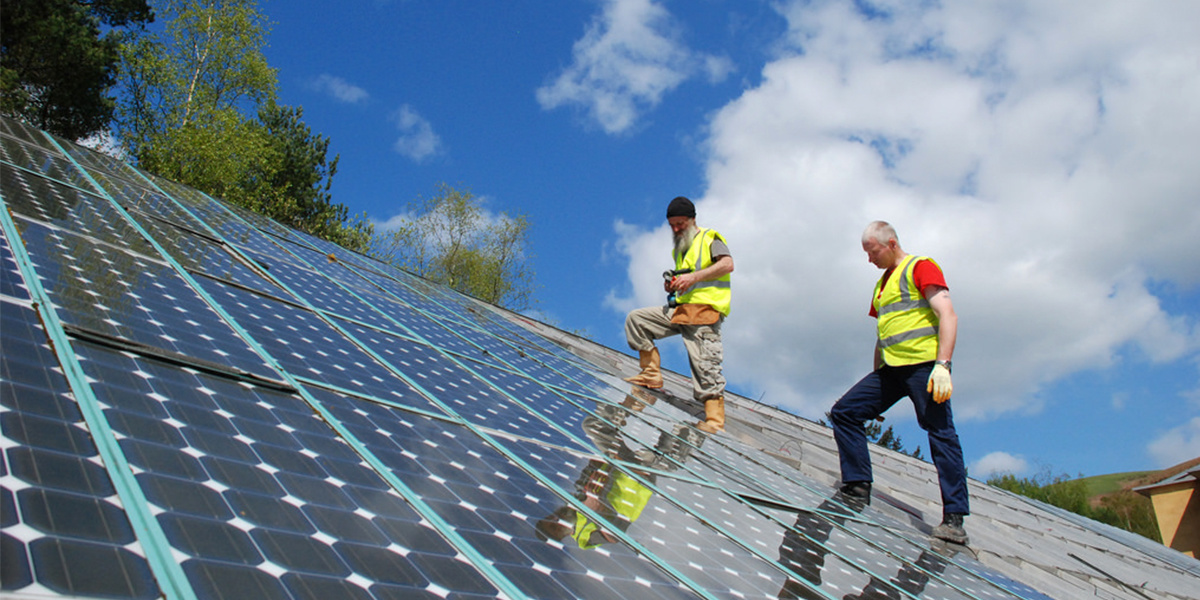

The U.S.
solar industry lost 9,800 jobs last year, the first decline ever recorded since 2010, according to The Solar Foundation‘s latest National Solar Jobs Census.
This 3.8 percent decline was driven by a number of factors, from a slowdown of utility-scale and residential solar installations to the industry’s uncertainty over
President Trump‘s tariffs on imported solar panels.
“After six years of rapid and steady growth, the solar industry faced headwinds that led to a dip in employment in 2017, including a slowdown in the pace of new solar installations,” said Andrea Luecke, president and executive director at The Solar Foundation. “Uncertainty over the outcome of the trade case also had a likely impact on solar jobs growth.”
President Trump’s decision last month to impose 30 percent tariffs on imported solar panels and related equipment was made to protect domestic manufacturers but was criticized by most of the solar industry. The
Solar Energy Industries Association warned that the decision would effectively cause the loss of roughly 23,000 American jobs this year.
However, the sector remains positive about the long-term outlook.
“While the industry faces challenges ahead, including higher costs as a result of the new tariffs, the demand for low-cost, reliable, and sustainable energy shows no sign of slowing down,” George Hershman, president of
Swinerton Renewable Energy, said. “In the years ahead, we are confident that solar will continue to create jobs and grow local economies across the United States.”
Lynn Jurich, the co-founder and CEO of
Sunrun, noted that while the tariff “restrained the industry in recent months, the fact remains that solar energy is the lowest-cost, cleanest, most abundant and accessible energy source in the world.”
The Solar Foundation report showed that the number of U.S. solar jobs boomed 168 percent in the past seven years, from about 93,000 jobs in 2010 to more than 250,000 jobs in 2017—a trend that swamps other energy industries such as
coal and nuclear energy.
Solar employs twice as many workers as the coal industry, almost five times as many as nuclear power, and nearly as many workers as the
natural gas industry, the report found.
There are some other bright spots in The Solar Foundation’s eighth annual report.
While the two states with the largest number of solar jobs nationwide saw a drop in employment (California by 14 percent, Massachusetts 21 percent), solar jobs increased in 29 other states and the District of Columbia last year. This includes states with emerging solar markets, such as Utah, Minnesota, Arizona, Colorado, Pennsylvania, New Jersey, New York and Tennessee.
Minnesota governor Mark Dayton applauded the state’s “strong commitment to clean energy” for its solar workforce growth of 48 percent last year.
“We will continue doing everything we can to protect our environment and our health, while building an even stronger
clean energy economy in Minnesota,” Dayton added.
Here are other key findings from the report:
- Demand-side sectors (installation, sales & distribution, and project development) lost approximately 7,500 jobs in 2017, while the manufacturing sector lost about 1,200 jobs.
- In the five-year period between 2012 and 2017, solar employment grew by 110 percent overall or 16 percent annually, adding 131,000 jobs. Within this period, solar employment grew nine times faster than the overall U.S. economy, and one in every 100 new jobs was a solar job.
- Solar makes up just under 2 percent of overall U.S. energy generation, yet it employs twice as many workers as the coal industry, almost five times as many as nuclear power, and nearly as many workers as the natural gas industry. (These numbers are based on 2016 data, the most recent available for comparison between industries.)
- Women made up 27 percent of the solar workforce in 2017, down 1 percent from 2016. Veterans made up 9 percent of solar workers, which is 2 percent more than the overall U.S. workforce.
- Solar industry wages remain competitive with similar industries and above the national average.
The State of the U.S. Solar Industry: 5 Questions Answered https://t.co/2AMTjXOghV @solarfeeds @SolarEnergyNews
— EcoWatch (@EcoWatch) January 27, 2018

 233k
233k  41k
41k  Subscribe
Subscribe 